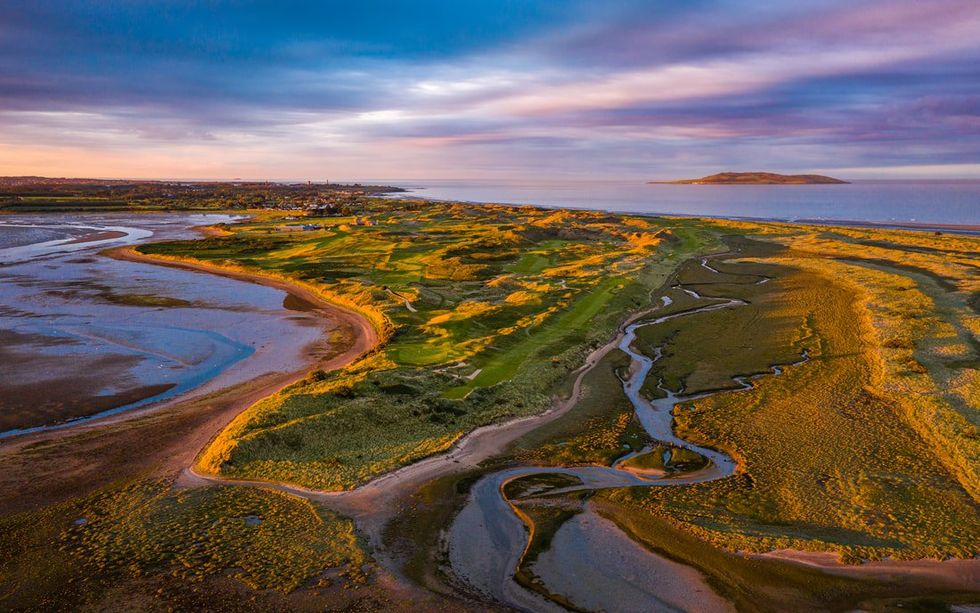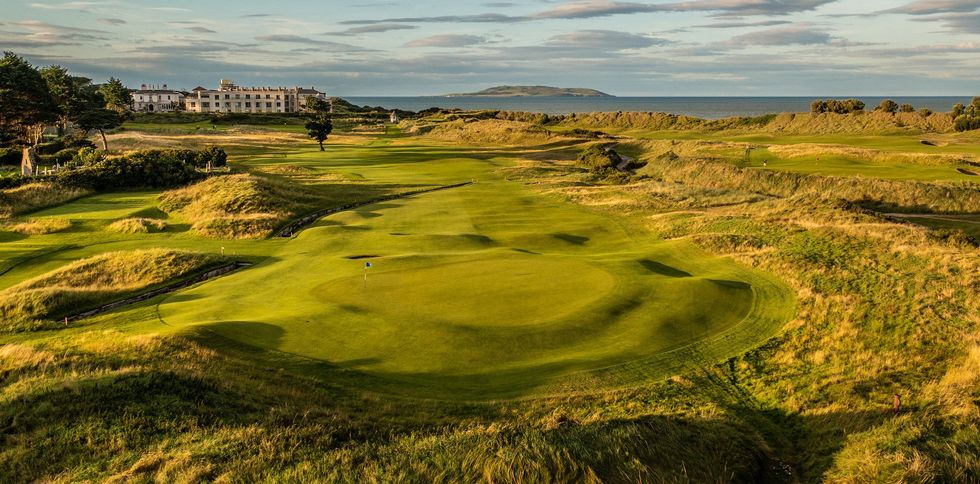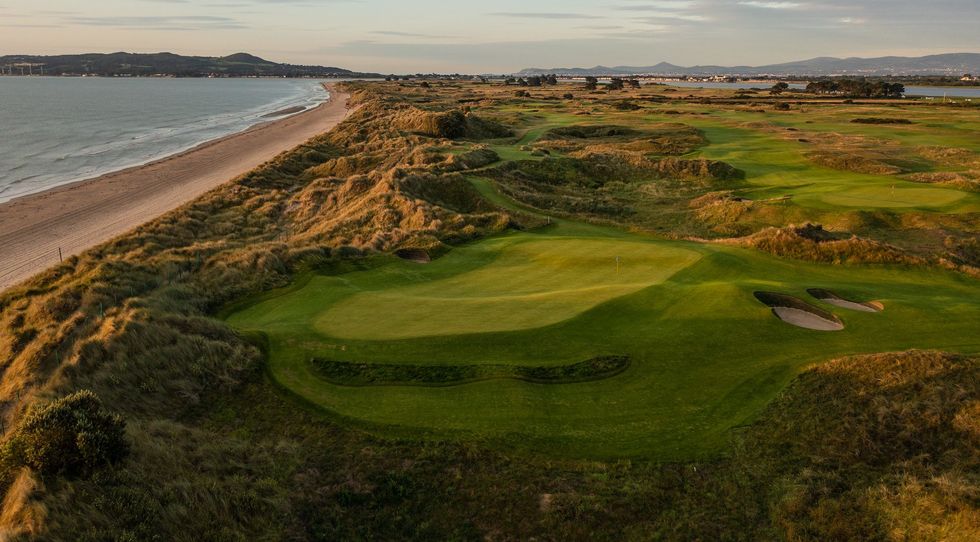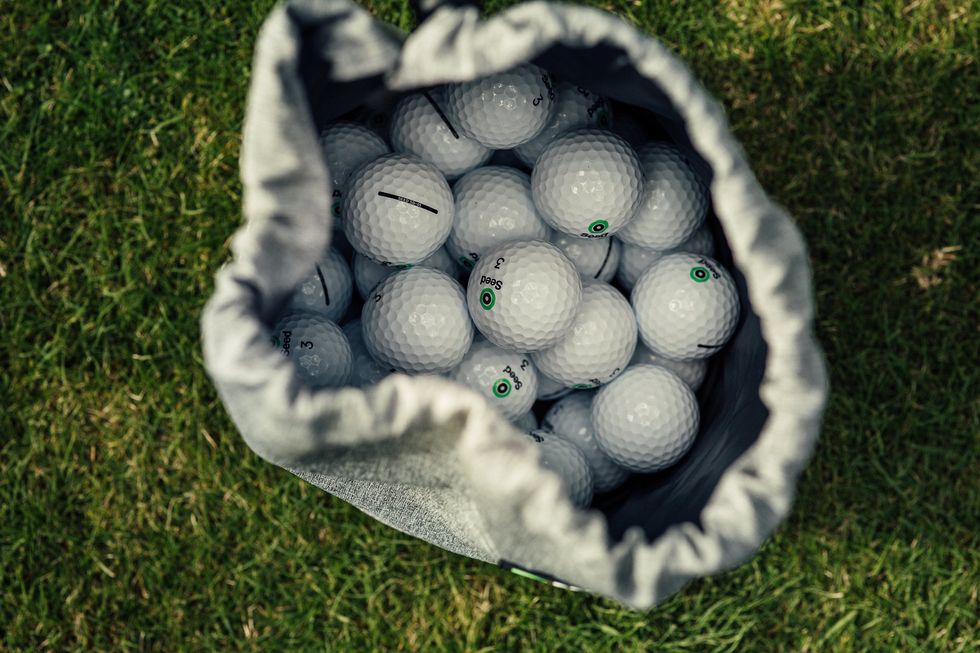Golf might be the only game where the ancient and the modern combine so harmoniously.
What other sport offers players the chance to experience world-class venues which opened centuries ago, while using the most contemporary tech? That was the case for a lucky group of us in Ireland, combining historic links and brand-new gear for a truly special week of golf around Dublin.
Before we start, it’s worth saying that it’s about time Ireland had an interesting golf brand to shout about. Ireland is producing great golfers all the time and it’s home to some of the most glorious courses in the world, but its track record when it comes to brands is less impressive.
But we’re here with Seed, a direct-to-consumer golf ball brand which has made big strides since the idea was first formed in 2015. Seed is designed in Ireland and its roots are here, with a mission statement to appeal to the everyman and pro alike – essentially, everyone should be playing a good quality ball no matter your budget, according to them.
The brand is all about providing balls that rival the performance of the big boys, only at half the price, and the hidden gems of courses dotted around Dublin seem the perfect showcase.
Seed
Our first stop is The Island Golf Club – a stunning test of links golf, and one of the best courses you’ve probably never heard of in Ireland and the UK. The opening tee shot is flanked by high dunes and unforgiving rough, proving a real challenge from the very start, especially coming straight off the plane after a 4am start, we can attest – miss the fairways and you’re in a world of trouble.
The fairways at this beautiful venue run through these dramatic dunes, before opening up slightly on the back nine right next to the sea. There’s a stretch of holes beginning with the 210-yard par three 13th, right next to the bay, with thick gorse around the green and a cliff face short right, that will test golfers of any level. Then, the very next hole is a par four with the narrowest fairway in Europe, measuring just 20 yards wide. Miss that and you’re quite literally on the beach.
 The Island Golf Club
The Island Golf Club
Players making the trip to the venue, a short drive outside of the city, can expect beautiful backdrops, a quirky layout and a traditional feel, with the course dating back to 1890. We experienced it on a perfectly calm day and it still proved a challenge. Good luck if the wind gets up; there’s drama here on every hole, waiting to be found. More people need to know about this course; it’s a truly special place to play golf.
Just along the coast is our home for the next two nights – the Portmarnock Resort and Jameson Golf Links. The hotel itself is a plush exercise in contemporary luxury, with the beautiful Jameson bar offering a sophisticated menu (complete with very solid vegetarian options too), as well as spa facilities and an excellent breakfast service.
Golf, especially in Ireland it has to be said, always seems to pair with Guinness and whiskey remarkably well, at least in my experience – and there’s something fitting about staying at the place which was the home of the Jameson family for many decades.
 Portmarnock Resort & Jameson Golf Links
Portmarnock Resort & Jameson Golf Links
The Jameson family moved to the coastal home in 1847, and John Jameson III built a private course on this same land in the 1850s, while overseeing the management of the distillery in Dublin’s Bow Street (which is now an excellent tourist centre which we were lucky enough to visit for a tour during our time there). The ties to the land still run deep – in fact, the graveyard in which John Jameson III is buried is right off the edge of the first fairway.
The golf course designed by Bernard Langer was previously known as Portmarnock Links and it went through a big update before reopening last year, featuring some impressive, and often idiosyncratic changes overseen by Jeff Lynch and his team. It’s picturesque, playable and home to some beautiful holes by the coast.
The 9th is a par three which sits right by the water, framed by the Irish sea and the dunes which surround it, and situated right next to a charming little Jameson hut providing some of the best pints of the black stuff we had on the trip. A deep channel sits in the centre of the green, banking up either side feeding down towards the hole, providing a quirky challenge. The greens were in great condition and were running fast for links golf, too. It makes for a golfing experience that’s far better than your average resort course.
 Portmarnock Resort & Jameson Golf Links
Portmarnock Resort & Jameson Golf Links
Our last stop was perhaps the biggest treat of them all. County Louth Golf Club, known colloquially as Baltray, was host to a famous Irish Open won by a fresh-faced Shane Lowry in 2009 as an amateur. Upon our arrival, we experienced a wonderful, warm welcome – the kind that Ireland does better than anyone else in the world.
Where to start on the outstanding conditioning of the historic course, which dates back to 1892? Links courses, always at the mercy of the elements, can sometimes struggle to match the pristine nature of some plush parklands. But here, the fairways were pristine, resembling great emerald channels cutting through amber fescue. It was a joy to play it on a perfect sunny day with good company (shout out to my playing partner Fionan Murphy, a vibe on the course for all three rounds).
There are no weak holes at Baltray, and a standout is the 14th. There’s a beautiful view from the tee, feet from the ocean, with Seapoint Golf Links next door within touching distance. At Baltray you’ll contend with some of the most undulating green complexes you’re ever likely to find, with huge roll-offs that can make you very silly, very easily. True links golf is the most fun (and occasionally maddeningly hard) but memorable form of the sport, and it’s well showcased here.
All of these experiences are to be had within around half an hour of Dublin. For whatever reason, Dublin doesn’t always get recognised as a world-class hub for golf, but there are great tests here, and hidden gems around every corner. It feels like a good place to try Seed out.
The balls really do perform and stack up. Getting hands-on in the perfect conditions helped things along, but people in our group, some of them professionals and players at the top of their game, put the balls to test alongside market leaders on the simulators in Dublin’s Sigmoid HQ and came away impressed. For many players like me, though, it’s not so much about the numbers. Traditionally, cheaper balls have fulfilled a specific purpose, for people who are willing to sacrifice performance in exchange for a lighter financial hit – after all, not everyone wants to be costing themselves around £4.50 every time they lose a ball off the tee with a wayward drive. Things are different here, though.
 Seed
Seed
I used the flagship SD.01 throughout the trip and it gripped rock-hard links greens, gave a sense of confidence with the short game and provided great feel and flight with longer irons off the tee. Perhaps just as importantly, though, they looked good at address and were fun to hit which is something of a rarity – most affordable golf balls don’t make you excited to hit them.
In fact, it could be the best ball you’ve not heard of yet, matching the feel of the stunning links we’re playing pretty perfectly, and combining the cutting-edge with the historic.
Sign up for our free indy100 weekly newsletter
How to join the indy100’s free WhatsApp channel
Have your say in our news democracy. Click the upvote icon at the top of the page to help raise this article through the indy100 rankings

